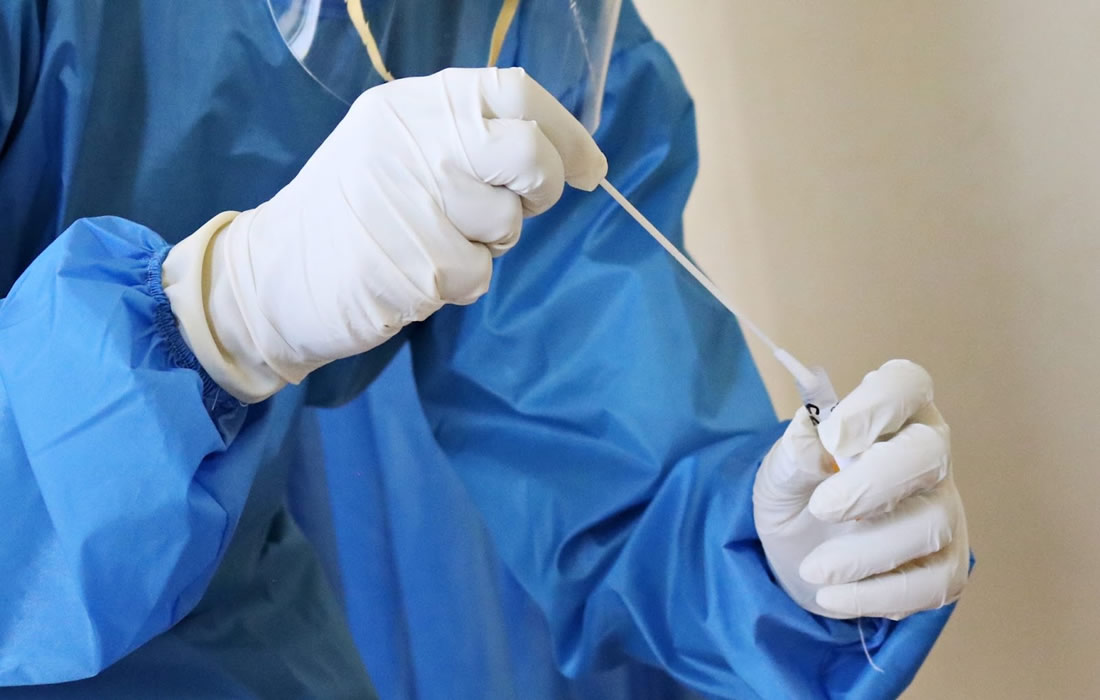COVID-19
COVID-19 Can Directly Damage Human Kidney Cells
When COVID-19 began spreading across the globe in early 2020, physicians knew that the virus primarily infected cells in the respiratory tract. But as the case numbers began to grow, physicians were surprised to see that many patients were also developing injuries to their kidneys.
The issue came to Samira Musah’s attention when she attended a virtual symposium in the spring of 2020.
“It was shocking to hear doctors describe how patients who were healthy suddenly developed kidney injury and needed to go on dialysis after contracting SARS-CoV-2,” said Musah.
In previous work, Musah and her team showed that they could guide human induced pluripotent stem cells to develop and mature into functional podocytes, which is a specific type of kidney cell that helps control the removal of toxins and waste from the blood. Musah and Titilola Kalejaiye, wanted to see if they could use this model to determine how and why SARS-CoV-2 was capable of damaging kidney cells.
As a proof of concept, Kalejaiye initially worked with a pseudovirus version of SARS-CoV-2. After introducing the pseudovirus into their podocyte cell model, Kalejaiye discovered that the spike protein of the virus could directly bind to numerous receptors on the surface of podocytes.
“We found that the virus was especially adept at binding to two key receptors on the surface of the podocytes, and these receptors are abundant in these kidney cells,” explained Kalejaiye. “There was a strong uptake of the virus initially, and we also found that when you increased the dose of the virus, the uptake would increase even further. The virus seemed to have a strong affinity for these kidney cells.”
To test their podocyte model with the real SARS-CoV-2 virus, Musah and Kalejaiye teamed up with Maria Blasi, an assistant professor of medicine at Duke and a researcher in the Duke Human Vaccine Institute.
Just like with the pseudovirus, the team observed that the live version of the virus had a strong affinity for podocytes. Once the virus infected the cells, it damaged the podocytes, causing their long, finger-like structures, to retract and shrivel. If the injuries to the cells were too severe, the podocytes would die.
“Beyond the structural damage, we saw that the virus could hijack the machinery of the podocytes to produce additional viral particles that could spread to infect additional cells,” Blasi said.
Now the team hopes to expand their work to study how the different variants of SARS-CoV-2 behave in kidney cells. As variants of the virus have emerged, kidney injuries are occurring less frequently. This has made the team question how the new variants are changing and if they are becoming less capable of infecting kidney cells.
Sources:
Titilola D. Kalejaiye, Rohan Bhattacharya, Morgan A. Burt, Tatianna Travieso, Arinze E. Okafor, Xingrui Mou, Maria Blasi, Samira Musah. SARS-CoV-2 Employ BSG/CD147 and ACE2 Receptors to Directly Infect Human Induced Pluripotent Stem Cell-Derived Kidney Podocytes. Frontiers in Cell and Developmental Biology, 2022; 10 DOI: 10.3389/fcell.2022.855340
Duke University. “COVID-19 can directly infect and damage human kidney cells.” ScienceDaily. ScienceDaily, 21 April 2022. <www.sciencedaily.com/releases/2022/04/220421181201.htm>.
Images from:
Photo by Mufid Majnun
https://unsplash.com/photos/oI20ehIGNd4

